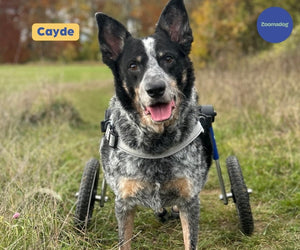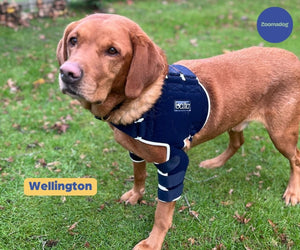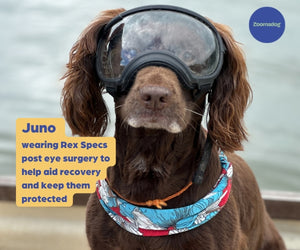01730 622544

What Does IVDD Look Like In My Dog? What are the Early Signs of IVDD In My Dog?
What Does IVDD Look Like In My Dog?
There are several clues that your dog has dog IVDD. Some may be to do with their behaviour but a lot are visual. With intervertebral disc disease in dogs, you’ll notice that your dog isn't walking with their usual gait. These are what you should be watching out for:
- Does your dog look as if they’re in pain? Are they showing signs of discomfort, sensitivity to touch, or hunching their back? Have you noticed that your dog’s neck muscles or belly are very tense? Is their head held lower than normal?
- Is your dog stumbling, unsteady on its paws, wobbling, dragging its back legs, or looking generally uncoordinated? Do you think that they look like they’re walking like a ‘drunken sailor’? Or are their back legs crossing over while they walk?
- Is your dog paralysed or displaying general rear leg weakness? Is their tail limp?
- Are their paws knuckling?
- Are they less mobile than normal? Do they seem reluctant to do their normal activities such as moving, jumping or climbing the stairs? Are they going to their food or water bowls but then not eating?
- Have they become incontinent?
- Does your dog seem anxious or unusually snappy?
These are all dog IVDD symptoms, where the nerve messages up and down the spinal cord have become disrupted. This is because, where the disc has “burst” material, it's now pressing on the spinal cord, which makes normal activities such as walking, or even going to the toilet, difficult.
What are the Early Signs of IVDD In Dogs?
- Back pain: Dogs may exhibit signs of discomfort, sensitivity to touch or hunching of their back. Sometimes neck muscles can also be tense. They might be holding their head low and have a tense belly.
- Loss of coordination: Dog IVDD can lead to neurological symptoms, causing difficulty in walking, stumbling, unsteadiness, wobbly gait, or dragging of back legs. This is sometimes referred to as a ‘drunken sailor’ walk. The back legs might cross over when walking.
- General weakness or paralysis: Dogs may experience muscle weakness or, in severe cases, complete paralysis in the hind limbs. Their tail might be limp.
- Paw knuckling: The back paws, or all four, might start knuckling.
- Reduced mobility: Slipped discs in dogs can make them seem reluctant to move, jump or climb the stairs. This can be gradual or sudden. You may notice they go to their food or water bowls, but then look at them, rather than eating or drinking. If you then bring the bowl up to their mouth, they’ll eat or drink from that position.
- Loss of bladder and/or bowels: Sometimes, due to paralysis, there’s a loss of bowel and/or bladder control. Or it may just be that your dog has difficulty maintaining their posture while urinating/defecating.
- Anxious behaviour: Your dog may just display general anxious behaviour, such as shivering or panting. This is often a way of displaying pain/discomfort. If your dog’s in pain, they may snap or growl at you, even if normally a calm and even-tempered dog.
Read more about the Early Signs of IVDD here: https://zoomadog.co.uk/collections/dog-ivdd-or-intervertebral-disc-disease
Further reading
Read more about IVDD Causes, Prevention and Help at Home: https://zoomadog.co.uk/collections/dog-ivdd-or-intervertebral-disc-disease
Read further about Non-Surgical and Conservative Management IVDD treatments here: https://zoomadog.co.uk/collections/conservative-management-ivdd
Find the best dog Back Braces here: https://zoomadog.co.uk/collections/dog-back-brace

Looking for help with your dog?
We can help find the right solution for your dog
Feel free to give us a call on 01730 622544
or email us at woof@zoomadog.co.uk







Leave a comment